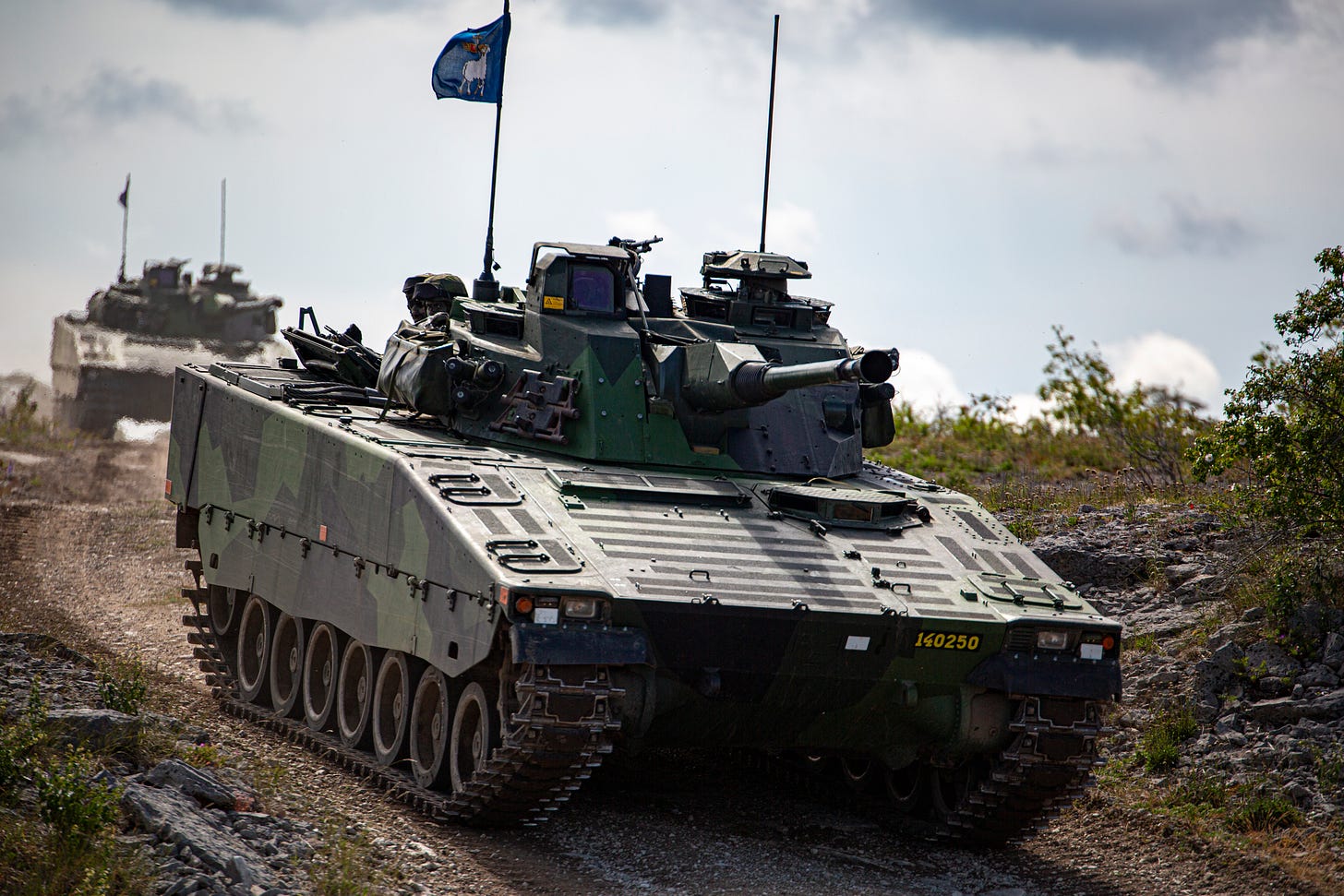Nordic Armor Alliance: Four Nations Unite Around the CV90
If Ukraine is Europe's shield, then the CV90 is its chainmail armor

On April 22, 2025, during a joint press conference in Vilnius, Swedish Prime Minister Ulf Kristersson confirmed what many defense analysts had long suspected: Sweden, Finland, Norway, and Lithuania are joining forces to procure several hundred CV90 infantry fighting vehicles.
The Ukraine War has taught Europe and NATO invaluable lessons, unfortunately at great cost in Ukrainian lives. But we now know how Russia fights “modern” wars.
The move is part of a bigger strategy to create a unified, interoperable mechanized force in Northern Europe, capable of responding quickly to regional threats, most notably Russia.
While the final cost remains classified, early estimates suggest the deal could exceed €8 billion, depending on configurations and timelines. A formal declaration of intent is expected later this spring.
Why the CV90? A Nordic Legacy of Mobility and Firepower
When you look at the CV90, you are not just looking at an infantry fighting vehicle. You are looking at the culmination of decades of Northern European military doctrine baked into steel, silicon, and battlefield experience.
Designed in the late 1980s to replace Sweden’s aging Pbv 302 personnel carriers, the CV90 was born out of a simple, brutal reality: Nordic terrain is unforgiving, and any vehicle operating there had better keep up or be left behind.
At its core, the CV90 is a machine built for winter. From its earliest iterations, the vehicle emphasized low ground pressure, superior traction on ice and snow, and an engine capable of muscling through soft earth, marshlands, and frozen roads.
Sweden’s prototype was put through hell during its testing phase, slogging through snowdrifts, gravel pits, and forest tracks to prove one thing: survivability begins with mobility.
But the vehicle’s utility does not stop with how it moves. How it fights is equally impressive. The CV9040, Sweden’s domestic variant, packs a 40 mm Bofors cannon capable of gutting most light armored vehicles and pulverizing enemy infantry formations from over two kilometers away.
Export models, like Finland and Norway’s CV9030 or Denmark’s CV9035, swap out for NATO-standard Bushmaster autocannons, but the effect is the same: high rate of fire, high-velocity punch, and lethality on the move.
Keep reading with a 7-day free trial
Subscribe to Eyes Only with Wes O'Donnell to keep reading this post and get 7 days of free access to the full post archives.


